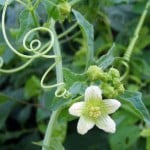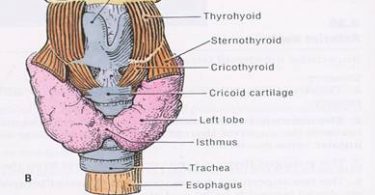Previous issues of Hpathy contained details on relatively recent research on homeopathy. This adds further material to that work.
Human studies
- Berrebi A, Parant O, Ferval F, Thene M, Ayoubi JM, Connan L, Belon P, Treatment of Pain due to Unwanted Lactation with a Homeopathic Preparation given in the Immediate Post-Partum Period. Gynecology, Obstetrics and Biological Reproduction, 2001, June, 30, 4, 353-7. 71 post- parturient women who were unwilling or unable to breast feed were divided into 2 groups, one being given a placebo and the other group being given a mixture of Apis 9C and Bryonia 9C, to determine its effects on lactation pain. A significant improvement was noted in the group using the mixture, when compared to those in the placebo group.
- Riley D, Fischer M, Singh B, Haidvogl M, Heger M. Homeopathy and Conventional Medicine: An Outcomes Study Comparing Effectiveness in a Primary Care Setting. Journal of Alternative and Complementary Medicine, 2001, Apr, 7, 2, 149-59. In this study, carried out by 30 investigators, at 6 clinics in 4 countries, 456 patients suffering from upper respiratory allergies, lower respiratory allergies or ear disorders were assigned to one of two groups- a prescribed homeopathic medicines (group A) or standard medical treatment (Group B). The outcome measure was the response to treatment after 14 days, as well as the speed of recovery, rate of side effects, level of general satisfaction and length of consultation. The response to treatment within 14 days was 82.6% in Group A and 68% in Group B. For recovery speed, 67% of Group A recovered within 3 days and 57% of Group A recovered at this speed. The side effect rate for Group A was 8% compared to 22% for Group B. Those claiming to be very satisfied with their respective treatments were 79% of Group A and 65% of Group B. The majority (60%) of both groups received consultations that lasted for between 5 and 15 minutes.
- Frei H, Thurneysen A. Treatment for Hyperactive Children: Homeopathy and Methylphenidate Compared in a Family Setting. British Homeopathic Journal, 2001, 90, 183-188. 114 children attending a paediatric practice where conventional and homeopathic medicines were used, and who were previously diagnosed with ADHD, were given individualised homeopathic medicines (increasing potencies of the most similar LM remedy). On a parent assessed basis (confirmed by the clinician), if a minimum 50% improvement was not noted within a certain period of time they were placed on Methylphenidate. 75% of the children responded to homeopathy and 22% required Methylphenidate. 3% of patients did not respond to either regime.
- Clover A, Ratsey D. Homeopathic Treatment of Hot Flushes. Homeopathy, 2002, 91, 75-79. In an uncontrolled outcome study, 31 patients attending the Tunbridge Wells Homeopathic Hospital were given individualised homeopathic treatment. All patients, both on a clinical and patient-rated assessment, experienced useful symptomatic benefit.
- Fisher P. An Experimental Double-blind Clinical Trial method in Homeopathy- Use of a Limited Range of Remedies to Treat Fibrositis. British Homeopathic Journal, 1986, July, 75, 3, 142-7. 24 subjects suffering from fibrositis were treated for the condition for 3 months with Arnica, Bryonia or Rhus tox, depending upon the similarity between the individuals’ symptoms and the clinical picture for the remedy. Using scores for pain, number of tender spots and sleep quality to determine the response to the therapy, these remedies produced a statistically significant improvement, but only when the remedy was well indicated.
- Ludke R, Weisenauer M. A Meta-analysis of Homeopathic Treatment of Pollinosis with Galphimia glauca. Wiener Medizinische Wochenschrift, 1997, 147, 14, 323-7. In this analysis, 7 randomised double-blind placebo controlled trials and 4 trials without placebo controls were examined to determine the therapeutic benefits of Galphimia glauca in pollinosis. In all studies except for one, Galphimia showed significant benefit over placebo where placebo controls were used, or showed significant clinical benefit where the remedy was not compared to placebo. The recovery rates for Galphimia were comparable with those seen with conventional anti-histamines, but without side effects.
- McCutcheon, L. Treatment of Anxiety with a Homeopathic Remedy. Journal of Applied Nutrition, 1996, 48, 1& 2, 2-6. This double blind placebo controlled study describes the outcome of the use of a homeopathic combination for the treatment of anxiety. At the end of the 15 day treatment period, sleep loss associated with anxiety was significantly improved in the group using the homeopathic combination.
- Van Erp VM, Brands M. Homeopathic Treatment of Malaria in Ghana. British Homeopathic Journal, 1996, April, 85, 2, 66-70. In a randomised double blind trial with limited numbers of subjects, homeopathic treatment was compared to treatment by Chloroquine. The group using homeopathic medicines experienced an 83.3% improvement, while the group using Chloroquine experienced a 72% improvement within the same time period.
- Frei H, Thurneysen A. Homeopathy in Acute Otitis Media in Children: Treatment Effect or Spontaneous Resolution? British Homeopathic Journal, 2001, Oct, 90, 4, 180-2. In a study involving 230 children with acute otitis media, homeopathic treatment was compared with placebo to determine whether homeopathic treatment provided a faster resolution of symptoms than placebo. After 12 hours, 72% of those using homeopathy experienced significant relief of symptoms, which was 2.4 times faster than the response to placebo.
- Frenkel M, Hermoni D. Effects of Homeopathic Intervention on Medication Consumption in Atopic and Allergic Disorders. Alternative Therapies in Health and Medicine, 2002, Jan-Feb, 8, 1, 76-9. In a study carried out at the Technicon-Israel Institute in Haifa, Israel, 48 patients were treated for allergic disorders with both homeopathic and conventional medicines, and monitored for their level of use of the conventional medicines. Over the 3 month monitoring period, 56% of patients reduced their conventional medication use by an average of 60%.
- Smith SA, Baker AE, Williams JH. Effective Treatment of Seborrhaic Dermatitis using a Low Dose Oral Homeopathic Medication. Alternative Medicine Reviews, 2002, Feb, 7, 1, 59-67. 41 patients with seborrhaic dermatitis received either placebo or a homeopathic combination product for 10 weeks. Significant improvement was seen in the test group when compared to those using placebo.
- Jeffrey SL, Belcher HJ. Use of Arnica to Relieve Pain after Carpal Tunnel Release Surgery. Alternative Therapies in Health and Medicine, 2002, Mar-Apr, 8, 2, 66-8. 37 patients who had undergone carpal tunnel release surgery were given a combination of Arnica Tablets and Arnica ointment or placebo. After 2 weeks of therapy, the group using Arnica reported a significant reduction in pain.
Animal studies
- Ruiz-Vega G, Perez-Ordaz L, Leon-Hueramo O, Cruz-Vasquez E, Sanchez-Diaz N. Comparitive Effect of Coffea cruda Potencies on Rats. Homeopathy, 2002, 91, 80-84. 30C and 200C potencies of Coffea cruda and caffeine were administered orally to rats, and EEG data from the parietal region recorded. When compared with control animals, Coffea 30C and 200C were associated with changes in EEG patterns that were consistent with increased sleep activity.



